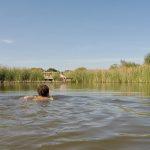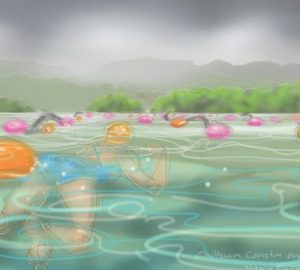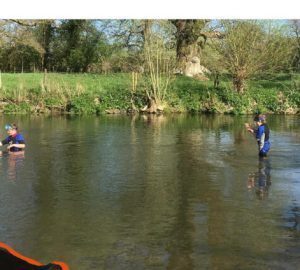Pushing the limits
Whoever designed the British Long Distance Swimming Association’s Champion of Champions event had a twisted and sadistic sense of fun. He or she also knew how to push swimmers’ will power to the limit.
If you’re not familiar with it, it works as follows. You start the day with a 10-lap 5-mile swim around Dover Harbour. Then, after a short rest, you do a six-lap 3-mile swim. Finally, you end the day with a two-lap 1-mile swim. The event is held near the beginning of the season when water temperatures are still fresh (this year’s 14 degrees was about average). The amount of time you get to rest and warm up between races depends on how fast you swim. BLDSA costume rules apply, so no wetsuits. Being Dover Harbour you do get glimpses of the white cliffs in the distance but the predominant view is the rusty sheet piling of the harbour wall. Nor do you get the satisfaction of swimming from one place to another.
This isn’t one of the scenic iconic swims that form the bulk of the BLDSA’s calendar but a brutal physical and mental challenge. Subsequently it is one of the organisation’s most popular and reached full capacity before the closing, so if you want to do it next year you need to get in early.
Long distance swimming challenges not just your ability to cover the distance but your body’s capability to withstand the cold. Nine miles is a significant distance to swim but reasonably straightforward if you can keep warm and consume enough calories. For me, it’s the cold that causes the problems.
A couple of people told me that they thought Champion of Champions was a tougher event than a 10.5 mile length of Windermere swim. Given that I ended up in hospital with hypothermia after the latter I had doubts about my ability to complete CoC, as it’s affectionately known. However, I reasoned that being able to jump out after five miles and warm up and eat (and sleep) would increase my chances. And this proved to be the case. But that doesn’t mean it was easy. Towards the end of the first five miles I was uncomfortably cold and afterwards spent a good 30 minutes shivering. I really didn’t want to go back in for another three miles but peer pressure is a powerful thing so I found myself stripping off and heading back into the water.
I have to agree with the perceived wisdom that the second swim is harder than the first. Three miles sounds deceptively short, but it’s 5km, the longest race that Great Swim put on, and you’ve already got five miles in your shoulders. The majority swam at a slower pace in the second race than the first. This was the “just get it done” phase. Finishing the three was brilliant because you know you only have a mile to go, but I was colder this time and it took me longer to warm up. I still managed another cheeky snooze though before the final celebratory lap.
Last week we published a blog post from Deborah Durbin where she questioned whether she should have entered an event that she had to retire from. But if we only ever take on challenges that we know we can complete, how will we find out what our limits are or what we can really do? I didn’t know whether I could complete CofC and there were certainly times when I questioned whether I could. But it’s done, it’s moved my swimming to a new level and there were even parts of it that I actually enjoyed.
I wouldn’t recommend pushing your limits with every swim, but every now and then, as long as proper safety precautions are in place, it’s worth doing. So what’s your next challenge?






